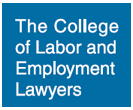Jun 24 2025
In a recent opinion, the Second Circuit handed future employees claiming retaliation more ammunition for such claims by reinstating a $700,000 jury verdict in a Title VII case that was previously thrown out by the district court. The opinion emphasizes two important points in favor of employees; first, that juries are entitled to credit circumstantial evidence of an employer’s retaliatory motives, and second, that employers can’t insulate themselves from liability simply by claiming that the final decision-maker in an adverse employment action lacked discriminatory intent.
In Edelman v. NYU Langone Health System, plaintiff Dr. Sari Edelman was a five-year employee of defendant NYU with no prior history of discipline when she had a relatively routine discussion with her supervisor, Dr. Joseph Antonik, over office space. Dr. Antonik responded to Dr. Edelman’s concerns over limited available space by muttering a sex-based slur and behaving in an aggressive, threatening manner. Just days later, another supervisor, Dr. David Kaplan, interrupted Dr. Edelman during a patient visit to tell her to “calm down.” Dr. Edelman filed complaints with HR as to both incidents, reporting what she perceived as sex-based comments and treatment by both male supervisors. Shortly thereafter, NYU began documenting Dr. Edelman’s alleged performance issues, and about a year later, declined to renew her employment contract.
Dr. Edelman sued NYU and several of its employees, including Drs. Antonik and Kaplan, for sex discrimination and retaliation for complaining about that discrimination in violation of Title VII. At trial, a jury found in her favor on the retaliation claims against NYU, Antonik, and Kaplan, awarding her $700,000 in damages. But the district court set the verdict aside, holding that there was insufficient evidence for a reasonable jury to find retaliation by either Antonik or Kaplan, or that their actions were causally linked to Dr. Edelman’s termination. The district court reasoned that Antonik and Kaplan’s discriminatory animus did not matter because they were not the final decision-makers who terminated her employment.
On appeal, the Second Circuit found that the jury’s verdict against NYU and Antonik was supported by sufficient evidence and should not have been vacated by the district court. The decision specifically pointed to the close proximity in time between Dr. Edelman’s internal complaints and the start of NYU’s documentation of her alleged poor performance; the inconsistencies in the stated reasons for non-renewal of her contract, and the degree of influence Antonik appeared to have in the decision-making process.
As to the retaliation claims, the main takeaway from the Second Circuit’s decision is the court’s reiteration of the “cat’s paw” doctrine as a viable and important doctrine in retaliation cases. The “cat’s paw” theory of liability allows a plaintiff to hold an employer liable for discrimination or retaliation even without evidence that the final decision-maker itself in an adverse employment action was biased. Rather, a plaintiff can prevail by showing that a subordinate who was involved in the decision exhibited discriminatory animus or conduct that influenced the decisionmaker in reaching its conclusion – regardless of whether the decisionmaker itself acted with discriminatory or retaliatory intent.
In underscoring the applicability of this theory to the facts in Edelman, the Court noted the doctrine’s longstanding usage by acknowledging that “[i]t is well established that an employer can be liable for retaliation under a cat’s paw theory if the biased input of a non-decisionmaker proximately caused the adverse action.” In other words, just because a decision-maker says they were neutral doesn’t break the chain of causation. If someone with power – even informal power – injects bias into the process, the employer can be liable.
As an overarching theme, the Second Circuit also appeared to have serious concerns about the district court substituting its own judgment for the jury’s findings on the issues of motive and credibility, particularly in the face of indirect evidence of discrimination. This is important given the relative rarity of direct evidence of discrimination in employment cases.
The Edelman decision reminds us that bias doesn’t have to come from the top or be direct and explicit to be legally actionable. Bias can fester in middle management and create problems for employers even when the final decision-maker doesn’t explicitly participate in discriminatory acts or share discriminatory animus. Fortunately for affected employees, legal liability can follow for the unlawful acts of those subordinates if they contribute to an adverse employment decision against an employee.
Posted by Garrison, Levin-Epstein, Fitzgerald & Pirrotti, P.C. in Employment Law
Tagged Discrimination, Retaliation Claim









